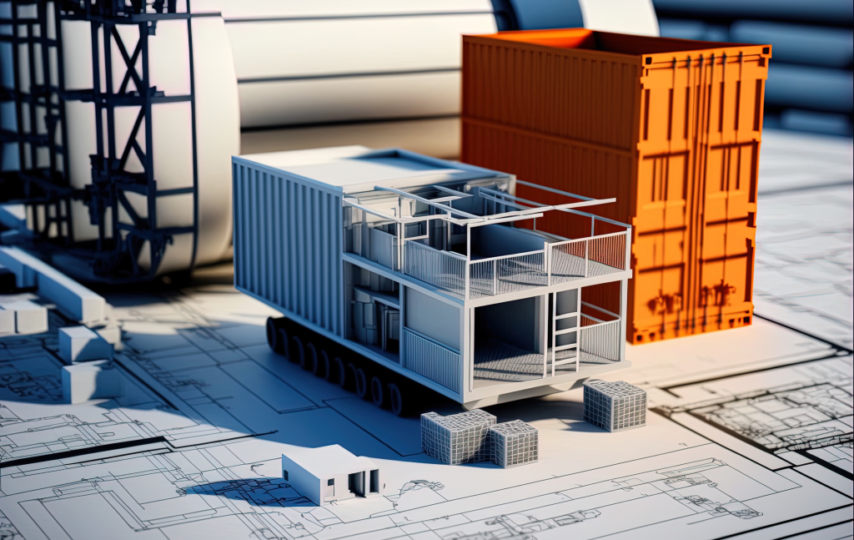The journey from conceptualization to attention of a shipping container cleanroom entails a meticulous layout and production system aimed toward growing a controlled environment suitable for sensitive operations. Let’s check out the complexities and steps concerned in bringing this innovative idea to existence.
Conceptualization and Planning
The process starts with conceptualization, in which the need for a cleanroom within a delivery container is diagnosed. Whether it’s for pharmaceutical production, electronics manufacturing, or clinical studies, the idea is born out of the need for a portable, self-contained cleanroom answer. During this phase, key parameters which includes required cleanliness degree, size, format, and regulatory compliance are decided.
Detailed planning ensues, considering factors including web page region, accessibility, utilities, and integration with existing infrastructure.
Design and Engineering:
Once the idea is solidified, the design and engineering phase commences. Experienced experts collaborate to translate the conceptual vision into technical drawings and specifications. Structural engineers make certain that the delivery container can withstand the trials of transportation and provide a solid framework for the cleanroom.
HVAC (Heating, Ventilation, and Air Conditioning) engineers layout structures to preserve particular temperature, humidity, and air fine manage inside the cleanroom environment. Electrical engineers plan for electricity distribution, lighting, and manipulate systems to fulfill operational necessities.
Fabrication and Modification:
With layout plans in hand, the fabrication and change of the transport box begin. Skilled craftsmen reduce, weld, and support the container to accommodate cleanroom additives inclusive of walls, flooring, ceilings, and doors. Insulation materials are brought to regulate temperature and decrease sound transmission.
Specialized coatings and finishes are implemented to fulfill cleanliness requirements and facilitate easy cleaning and decontamination. Meanwhile, HVAC and electric structures are mounted, making sure seamless integration with the field structure.
Installation and Testing:
Once fabrication is entire, the modified delivery box is transported to its intended region for set up. Site guidance activities consist of leveling the floor, securing the box foundation, and connecting utilities which include strength, water, and drainage.
Skilled technicians carefully set up cleanroom components, making sure right alignment and capability. Following installation, rigorous trying out and validation techniques are conducted to confirm the performance of the cleanroom structures. Airflow styles, particle counts, temperature, humidity, and strain differentials are meticulously monitored and altered to satisfy exact necessities.
Regulatory Compliance and Certification:
Throughout the design and production procedure, regulatory compliance is paramount. Cleanroom requirements along with ISO 14644, USP <797>, or GMP (Good Manufacturing Practice) tips are adhered to, ensuring that the cleanroom meets industry-particular cleanliness and safety standards.
Once construction is entire and trying out is a success, regulatory agencies may conduct inspections and problem certifications verifying compliance with applicable requirements. These certifications offer guarantee to stakeholders that the transport field cleanroom is match for cause and meets the specified first-rate and protection requirements.
Operation and Maintenance:
With the shipping box cleanroom now operational, ongoing protection and tracking sports are essential to make certain persevered performance and compliance. Regular inspections, cleansing, and calibration of cleanroom structures are conducted to uphold cleanliness requirements and prevent contamination. Staff schooling packages are applied to teach personnel on cleanroom protocols, safety tactics, and emergency response measures.
Additionally, routine audits and checks may be executed to identify areas for development and optimization, ensuring that the delivery container cleanroom remains a dependable and efficient asset for its users.
Conclusion:
The design and production system of a shipping field cleanroom is a complex yet rewarding undertaking that calls for cautious making plans, professional craftsmanship, and meticulous attention to element.
From conceptualization to regulatory compliance, every section of the process is important in reworking a simple delivery field into an advanced cleanroom surroundings capable of helping essential operations throughout numerous industries.








